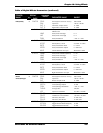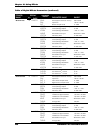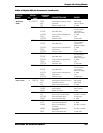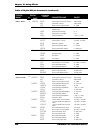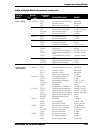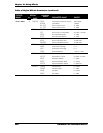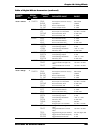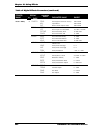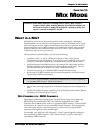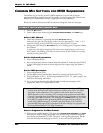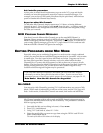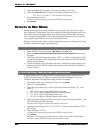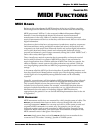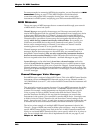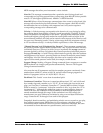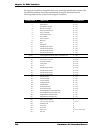
Chapter 11: Mix Mode
ANDROMEDA A6 REFERENCE MANUAL 243
CHAPTER 11:
MIX MODE
The basics of Mix Mode operation including how to select a Mix, change a
Program within a Mix, and the complete list of Mix Parameters can
be found in Chapter 2, pages 39 through 42. Setting up Splits and
Layers is covered on pages 47 and 48.
WHAT IS A MIX?
Mix Mode is one of the most powerful features of the Andromeda. Although in
Program Mode you can play only one Program at a time, in Mix Mode you can play
up to 16 Programs at once, either from the keyboard (as layers or splits) or from an
external sequencer (via 16 MIDI channels) or a combination of both. Keep in mind,
however, that since the Andromeda has a total of 16 voices, a full 16-channel Mix
would have only one voice per channel.
Having said that, with Mix Mode, you can do the following:
• Combine (“stack” or “layer”) different Programs so they can be played
simultaneously from the keyboard. For example, stack a stabbing synth sound
on top of a warm pad, adjusting the volume of each to get the mix you want.
• Split the keyboard into different zones—for example, the classic bass synth on
the left-hand side of the keyboard, and a brass program on the right. You can
split the keyboard into as many as 16 zones, which may overlap.
• Transmit on as many as 16 different MIDI channels simultaneously.
• Receive up to 16 MIDI channels from an external sequencer, with each channel
representing a different instrument.
Or, you can have several different programs on different Mix Channels responding
to the same MIDI channel. More on this below.
• Set the level, panning, transposition, and output assignment of each Program in a
Mix.
• Enable and disable the major controllers such as Pitch Bend, Mod Wheel, Ribbon
Controller, etc. individually per Channel.
MIX CHANNELS VS. MIDI CHANNELS
Most digital synthesizers (including the Alesis QS Series) assign one Program per
MIDI channel in a multitimbral Mix. But while the Andromeda has 16 Mix
Channels, that is not the same as the 16 conventional MIDI channels. Several A6 Mix
Channels may be “played” by only one MIDI channel if desired. This means that if
you want to play a layer of several Programs, you don’t have to clog the MIDI
sequencer with duplicate tracks and messages.
For example, you could have Mix Channels 1, 2 and 3 layered together, playing to
and responding to MIDI channel 8. Mix Channels 4 and 5 could be a bass layer
responding to MIDI channel 9.



